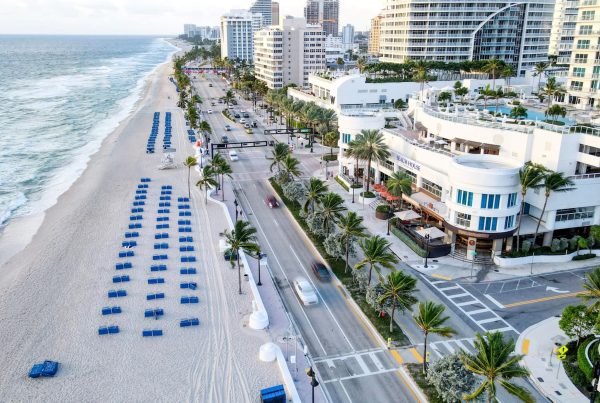The new Nat Geo documentary “Blink” (in theaters Friday) opens with a vision of interstellar majesty: the northern lights shimmering in a twinkly sky, as a family of six stares up at the marvelous aurora from a snow-covered expanse. But here’s the rub: Only half of the participants can see the lights in all their resplendence.
“Blink” is a travelogue about a Montreal family dealt an unfortunate blow. Three of the four children of Edith Lemay and Sébastien Pelletier—Mia, 13, Colin, 9 and Laurent, 7—have contracted retinitis pigmentosa, a rare genetic ailment that will mostly sap their eyesight. The kids already suffer from night blindness and contracting vision, and there is no known cure.
Like any parents, Sébastien and Edith grapple with the unacceptable reality that they are incapable of preventing the condition’s advancement. But if they cannot stop the disease, they can at least implant their children’s brains with visual stimuli before the point of no return. And so they embark on a yearlong trip around the world, scratching off dozens of “bucket list” items in the process, in an effort to fill their kids’ visual memories to the brim.
The rest of “Blink,” which is to say the majority it, is quintessential Nat Geo fare, as we follow the globetrotting clan across far-flung locales and experiences: a safari in Namibia, horseback riding in Mongolia, a nine-day mountain hike in the Himalayas. There are so many adventures in the Pelletiers’ circumnavigation that a visit to the pyramids in Giza only registers as a blip in the 83-minute running time. No matter where we accompany the family, we revel in the natural glories of Gaia.
Directors Daniel Roher and Edmund Stenson, veteran documentarians whose credits include films about The Band and Alexei Navalny, lean into the likeability of the Pelletiers and their surprisingly scrappy journey. The family presents as more middle-class than upper-crust, and they travel with an inspiring frugality—sleeping in tents or hostels, living off $200 per day, and homeschooling the children throughout the trip.
The expedition doesn’t proceed without hitches: Sébastien suffers an insect bite that requires a hospital visit, and we observe a fair share of sibling spats and pettiness. At one point, it verges on a waking nightmare, as the family is stranded, midair, on a broken cable car, with a diminishing water supply, for some 10 hours.
And the condition of Mia, Colin and Laurent forever lurks around the periphery of “Blink,” sometimes creeping into its field of vision, as it were, as the kids only begin to reckon with a burgeoning reality they can’t fully understand. This poignancy reveals itself, say, when one of the children, enjoying a soccer game with locals, feels he needs to stop playing because he can no longer see the ball. It might also explain the acute loss he feels when he has to leave a canine he’s befriended during their week-plus in Nepal: Not only will he never see the dog again; he may not see any dog again.
As Sébastien and Edith prepare their offspring for a sightless future, our heart breaks for the family. But like many works of empathetic art, “Blink” inspires the sighted majority to appreciate what we have, and to look a little bit deeper at everything on this little blue dot.
“Blink” opens Friday, Oct. 4 at Cinemark Palace in Boca Raton.
For more of Boca magazine’s arts and entertainment coverage, click here.







